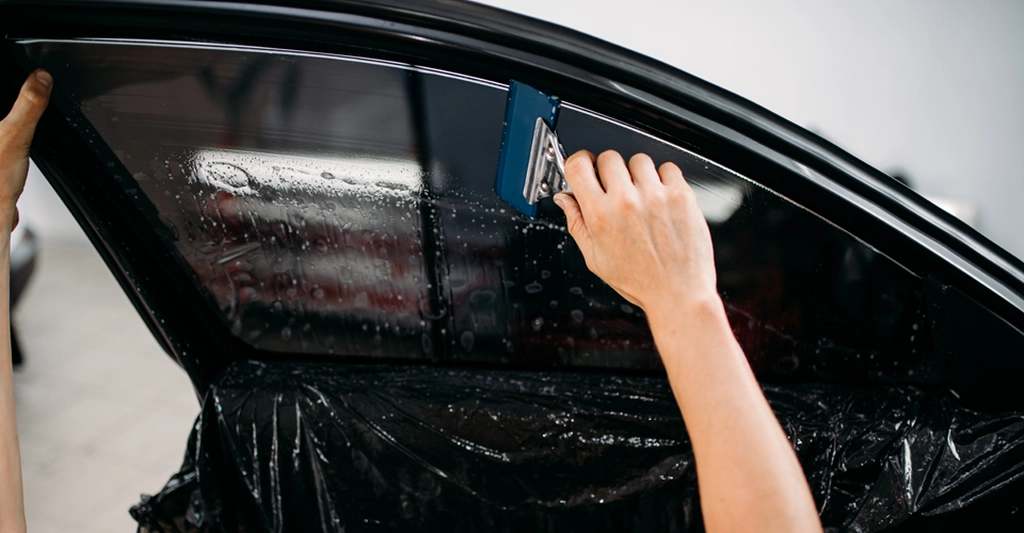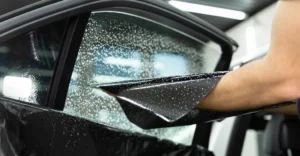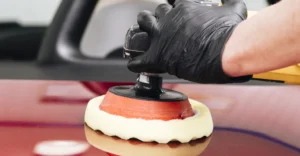An easy guide to finding the perfect car window tint for style, comfort, and safety.
If you’re thinking about getting your car windows tinted, you’re not alone. Whether you’re after more privacy, a cooler cabin, or simply a sleeker look, window tinting is one of the most popular car upgrades out there. But with so many tint percentages available, it’s easy to feel overwhelmed.
This guide explains what tint percentages mean, how they affect your driving experience, and which option might suit you best. We’ll also share practical tips on installation, legality, and maintenance to help you make an informed choice.
What Does Window Tint Percentage Mean?
The percentage in window tint refers to Visible Light Transmission (VLT) the amount of visible light that can pass through the film and into your car.
- Higher percentages (like 70–90%) let in lighter and appear lighter.
- Lower percentages (like 5–20%) let in less light and appear darker.
For example, a 5% tint means only 5% of visible light enters the car this is often referred to as “limo tint.” On the other hand, 70% tint allows 70% of the light to pass through, giving a lighter and more subtle appearance.
Common Window Tint Percentages Explained
No Tint (Factory Glass)
Factory windows usually come with a light tint between 70–85%. This helps block some UV rays but doesn’t offer much in terms of privacy or solar heat rejection.
70%–85% Tint
These light tints reduce UV exposure and glare without darkening the glass significantly. They’re great for improving comfort without changing your car’s appearance too much. Ideal for colder climates or if you want minimal change to visibility.
50% Tint
A popular balance between style and practicality. This level blocks a good portion of UV rays and some heat while maintaining clear visibility, especially at night. It’s a great choice for those who want comfort without a drastically darker look.
35% Tint
One of the most popular choices worldwide. This shade offers decent privacy, heat reduction, and a modern look without feeling too dark. You can still see inside the vehicle in daylight, but it adds enough coverage for peace of mind.
20% Tint
A much darker shade that offers a significant privacy boost. It reduces glare and sunlight effectively, but visibility at night may be reduced. It’s commonly used on rear windows and may not be legal on front windows in some regions.
5% Tint (Limo Tint)
This is the darkest available option. It provides maximum privacy and heat rejection but may be illegal for use on passenger front windows in many countries. It’s often used on limousines or vehicles with special permission.
Key Factors to Consider Before Choosing Tint
1. Local Tinting Laws
Always check local regulations before selecting your tint. Different countries and sometimes individual emirates, provinces, or states have specific rules about how dark your windows can be. For example, many regions allow darker tints on rear windows but limit the darkness of front side windows.
You may also be able to apply for an exemption if you have a medical condition that requires reduced sunlight exposure. Always carry proof if you have such an exemption.
2. Your Tinting Goals
Ask yourself what you’re trying to achieve. Is it:
- Better privacy?
- Improved interior temperature control?
- UV protection?
- A more stylish look?
Understanding your priorities can help you select the right VLT percentage. If privacy is key, lower percentages like 20% or 5% make sense. If you’re mainly blocking UV rays, even a 50% tint can be effective.
3. Day and Night Visibility
While dark tints offer great protection and privacy during the day, they can make driving at night more difficult. If you often drive in poorly lit areas, consider a mid-range option like 35% for a better balance of comfort and safety.
4. Interior Heat and UV Protection
Tint isn’t just about looks it can help keep your cabin cooler. The darker the tint, the less heat enters. High-quality ceramic tints, even in lighter shades, block a high percentage of infrared and UV rays without darkening the window too much. If you live in a hot region, investing in ceramic or carbon-based tints could be worth the added cost.
5. Who Should Install It?
While DIY tint kits are available, a professional installer ensures a clean, bubble-free application and long-lasting results. A poorly installed tint can peel, bubble, or even scratch your windows over time. Plus, certified installers often use higher-quality films that last longer and provide better heat and UV protection.
Frequently Asked Questions
Is 5% or 35% tint darker?
5% is much darker. It only allows 5% of light in, offering maximum privacy. 35% allows more than a third of the light in and is a more balanced, popular choice.
Is 20% darker than 35%?
Yes. 20% tint is darker than 35%, blocking more sunlight and offering greater privacy but it can reduce nighttime visibility and may not be legal on all windows.
What is a good everyday tint percentage?
35% tends to be a sweet spot for daily use. It’s dark enough to reduce glare and heat but still light enough for safe nighttime driving.
Does window tint actually reduce heat?
Yes, especially high-performance ceramic and carbon tints. They can cut down cabin temperatures significantly and protect your car’s interior from fading over time.
Can I tint over factory-tinted windows?
Yes, but you need to factor in the combined VLT. If your rear windows already have 70% tint, and you add 35% film, the final result will be darker than 35%. A professional installer can calculate the final VLT for you.
Final Thoughts
Choosing the right tint for your car isn’t just about looks it’s about comfort, safety, and legal compliance. With the right percentage, you can block harmful UV rays, reduce cabin heat, and enjoy a more comfortable drive.
Before choosing your tint, check the local regulations in your country or region, define your needs, and speak with a trusted tint professional.
If you’re in the UAE and looking to get your windows tinted professionally, MotorHub is here to help. We work with experienced automotive specialists who offer high-quality tinting services with compliance to UAE traffic laws.



